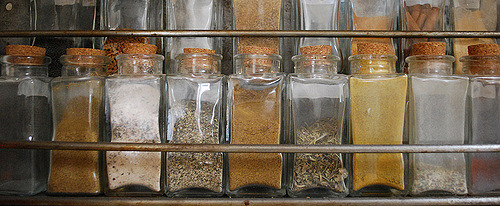
The Spice of Life
An announcement from a major spice company led to some questions from blogger Krista of The Farmer’s Wifee. The business announced that it was labeling organic and non-GM (genetically modified) spices and flavorings. Are there GM spices on the market? Does this announcement mean spices are changing?
Dr. Bruce Chassy, Professor of Food Microbiology and Nutritional Sciences at the University of Illinois, said there are no spices that are genetically modified, so the new label is not meaningful in that aspect.
Dr. Chassy
GM spices, if they existed, would be perfectly safe because GM technology is the safest method of breeding crops and GM crops undergo rigorous regulations. In years past, it was a claim FDA would not allow on the label since GM spices don’t exist. The claim implies that competitors’ spices are genetically modified.
Where do spices come from?
Dr. Chassy
Most spices we use to flavor our food are grown outside the United States. In fact, the U.S. imports more than 40 different spices and seven of those — vanilla beans, black and white pepper, capsicum, sesame seed, cinnamon, mustard and oregano — account for more than 75 percent of the total annual value of spice imports. According to the U.S. Department of Agriculture, the top countries where spices are imported from are India, Indonesia, Brazil and Mexico. Food safety risks are generally low.
Are spices safe to consume?
Dr. Chassy
Because we use such small amounts of spices, even if there were toxic poisons, we probably would not consume enough to hurt us. Consumers need to start thinking about dose. No person who eats a lot of spices would be at risk because the levels are thousand-fold below the maximum safe intake level.
Dr. Chassy also suggested considering several factors when deciding to buy spices that are organic or not.
As a food safety expert with over 40 years of experience in the field, I’d much rather eat a GM spice than an organic one. Why? The real risks associated with spices are that they are easily contaminated with bacteria, some of them pathogenic. Hot, humid climates and more primitive conditions conspire to make headaches for spice companies that must put systems in place to assure the spices they sell are safe — which they almost always are. It’s a job for big companies who know their business. I personally would steer clear of organic spices.
Dr. Chassy says the spices he uses most frequently include salt, pepper, cumin, powdered thyme, rosemary and poultry seasoning.
I try to use fresh cilantro, basil, rosemary, thyme and oregano when available, but will use freeze-dried or just dried leaves. Less often, I use allspice, nutmeg, cinnamon, coriander and whatever else a recipe calls for. I try to throw out all my spices once a year, but that’s not safety-related — it’s for freshness.
I’m totally comfortable with giving any of these spices to my family and safety never enters my mind with but one exception. There have been several reported outbreaks of salmonella in fresh cilantro from Mexico, so I watch for outbreak or recall news before I buy cilantro. The fact is that it’s the microbes that can give you foodborne illness that consumers should be aware of. GMOs and tiny residues of pesticides will do no harm.
What about pesticides?
Dr. Chassy
It’s worth noting that in the U.S. at least, the infinitesimal residues of pesticides found in some ingredients pose no threat to human health. The pesticide claims by organic companies are false in two ways: 1) they use pesticides — some more toxic than those used on conventional crops, and 2) there is no rational or scientific reason to be concerned about pesticides.
The image “Spices” by Brianna Lehman is licensed under CC BY 2.0.


























